Ground force: Simon Phipps puts British post-war public art in the frame
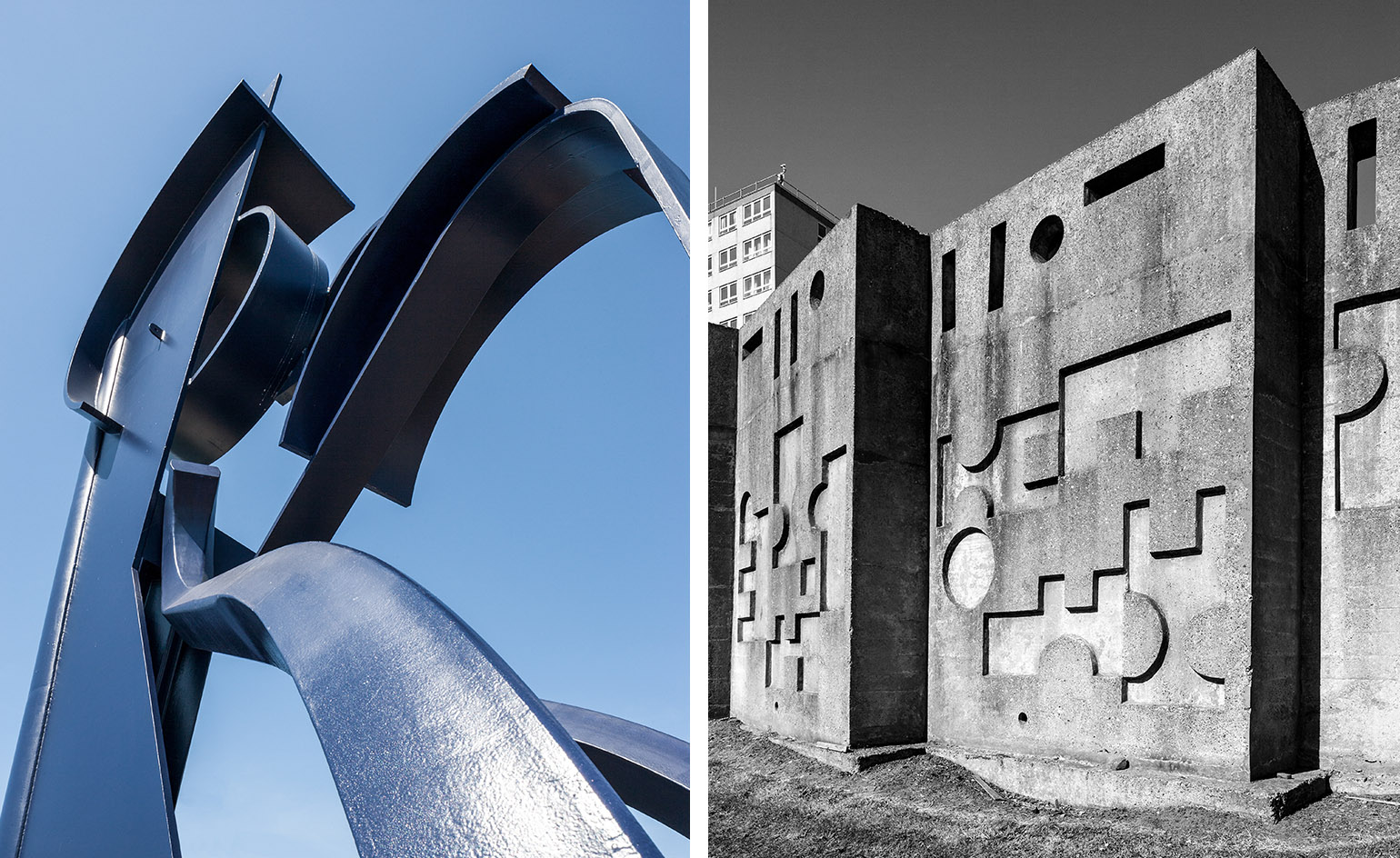
Tracey Emin once said that art is for everyone. The sentiment still resonates with British fashion designer Margaret Howell, who feels passionately about public sculpture. ‘It’s a gift to us all,’ she says. ‘It’s a pleasure to see art become part of a location, it really can enrich people’s lives.’
Last year, Howell took a trip to London's Courtauld Gallery to see an exhibition called ‘Out There: Our Post-War Public Art’. The show charted the conception and conservation of public artworks created in England between 1945 and 1985, and featured sculptures by the likes of Barbara Hepworth, Henry Moore and Elisabeth Frink. ‘It was just so impressive,’ she recalls. ‘That was a brilliant era, when modern pieces were more commonly commissioned for communal spaces.’
‘Out There’ inspired the concept behind Howell’s new exhibition, ‘British Post-War Public Art’, which is now on display at her brand’s Wigmore Street store. ‘I had seen some fantastic photographs that Simon Phipps had taken of British sculptures,’ she explains. ‘So, we asked him to document even more, especially for us.’ Above Ercol furnishings and small ceramic displays hang 18 of Phipps’ bold, texture-rich photographs of some of Britain’s most renowned public works, which remain unspoiled and in their original settings. ‘It’s a celebration of these wonderful sculptures as they are now,’ she affirms.
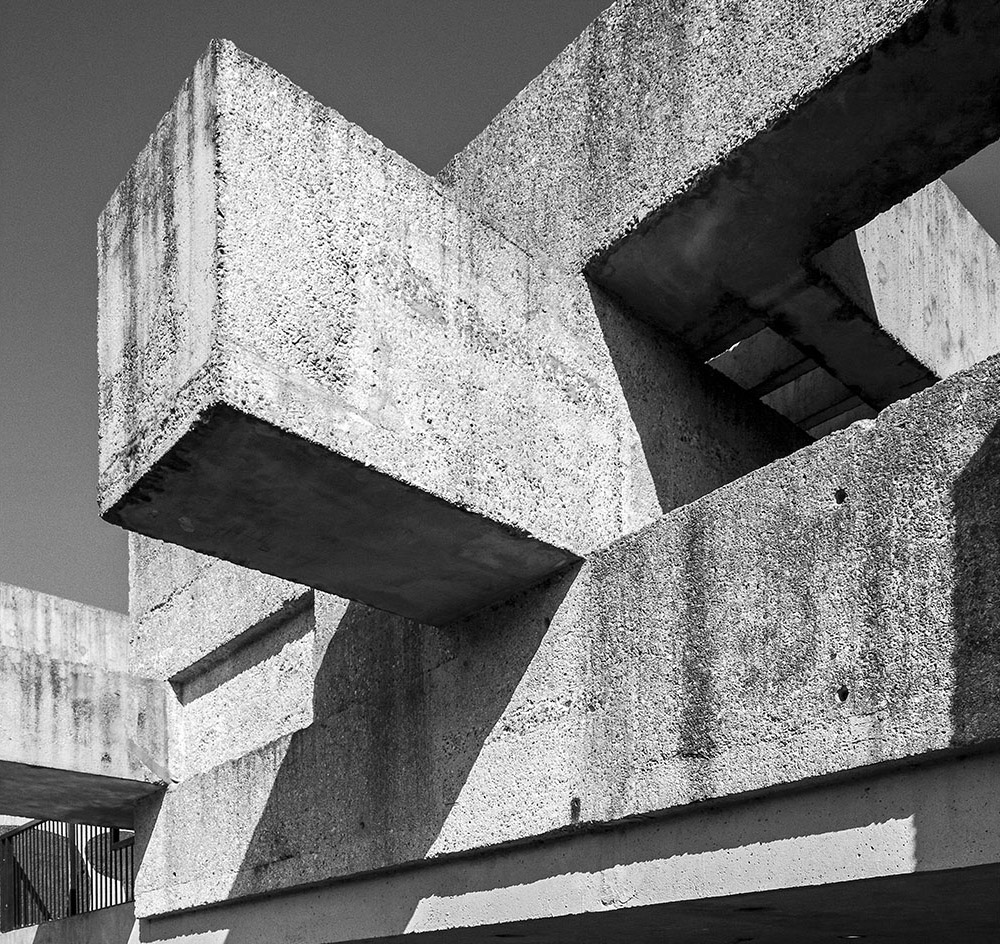
Apollo Pavilion, Peterlee, by Victor Pasmore.
In one image, Phipps has lensed Richard Serra’s Fulcrum (1987) from the ground upwards, in order to emphasise the scale of the imposing, wigwam-like structure that’s nestled between skyscrapers in London’s Broadgate. ‘That’s one of my favourite shots, Serra’s sculpture looks so powerful,’ notes Howell. Another photograph depicts Lynn Chadwick’s The Watchers (1969–70) in the leafy grounds of Roehampton University. The set of three bronzes was famously stolen in 2006, before being found and re-installed in its original location last year. ‘It’s such a shame when public sculptures are vandalised, it changes the landscape completely,’ she says. ‘I believe that all sculptures, no matter how surprising, can grow on you and become familiar.’
Howell also regards Phipps’ portrayal of Barbara Hepworth’s abstract Four-Square (Walk Through) (1966) at Churchill College, Cambridge as a focal point. The striking photograph, together with 11 other images from the show, also form the label’s 2018 calendar of the same name. ‘A calendar is great because it allows people to incorporate these works into their daily lives in a more causal way,’ she says. ‘Because art really is for everybody.’
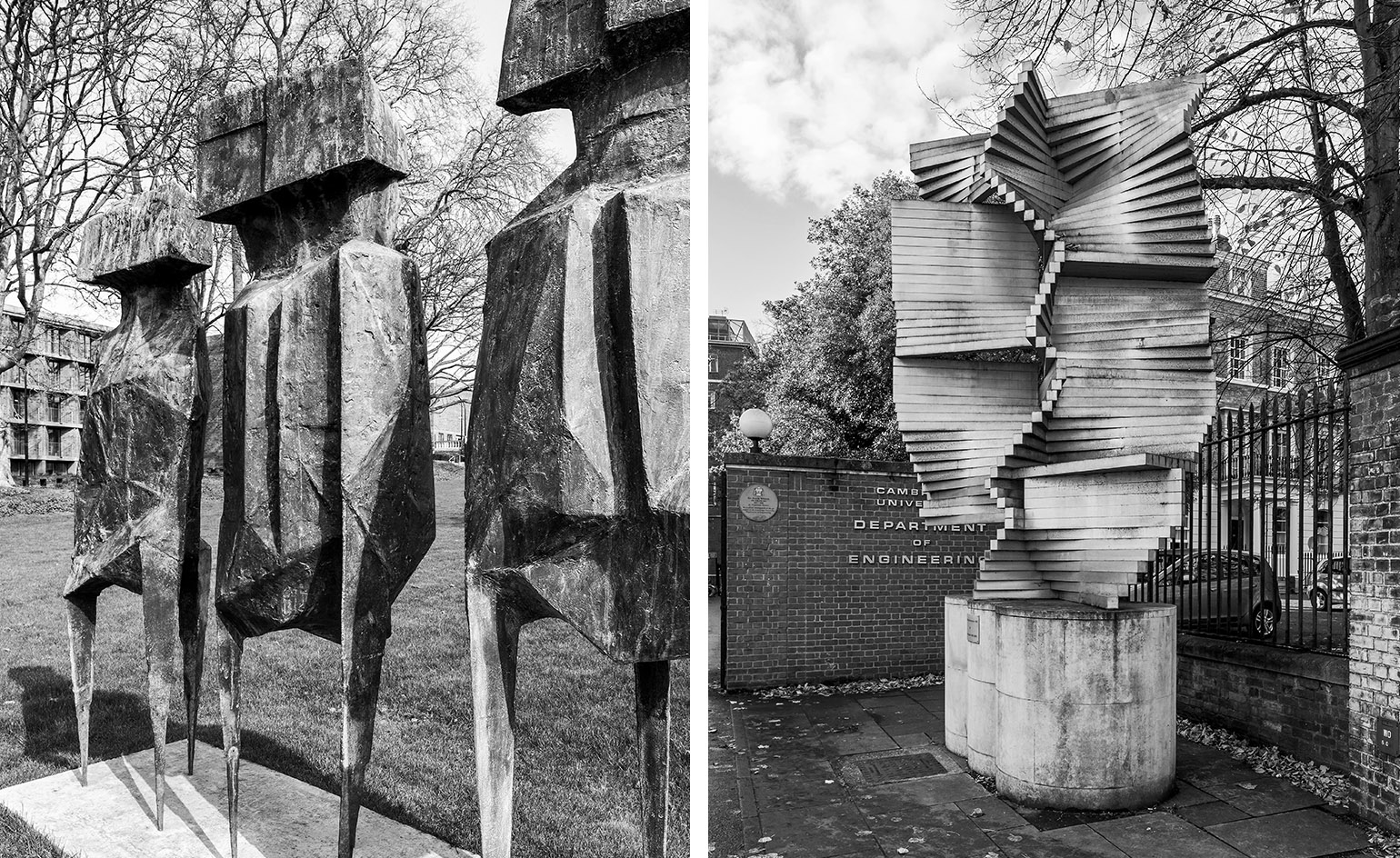
Left, The Watchers, Roehampton University, by Lynn Chadwick. Right, Oscillation, Cambridge, by Kenneth Martin.
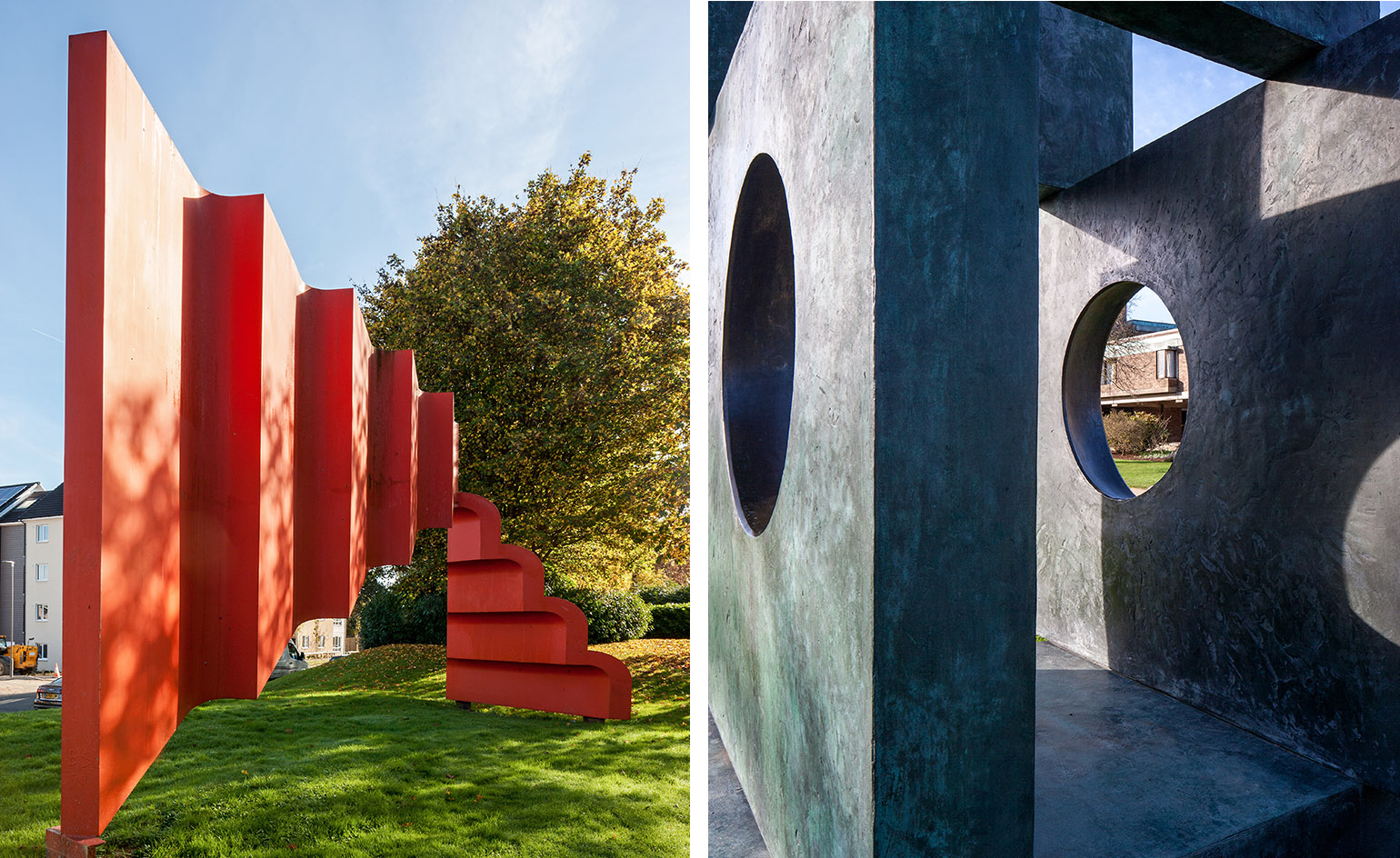
Left, 2MS Series No.1, Milton Keynes, by Bernard Schottlander. Right, Four-Square (Walk Through), Churchill College, Cambridge, by Barbara Hepworth.
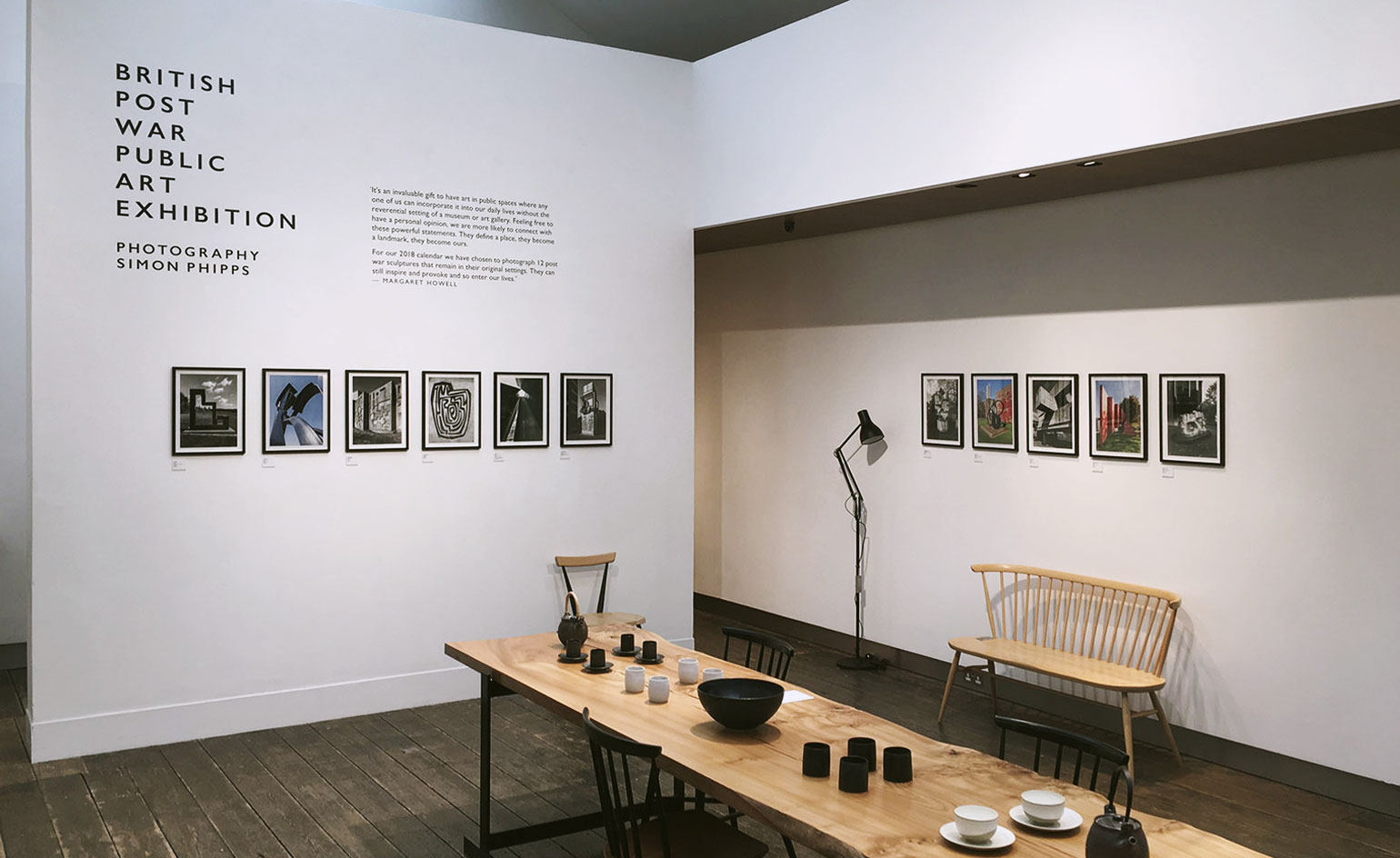
Installation view of 'British Post-War Public Art’ at Margaret Howell's Wigmore Street store
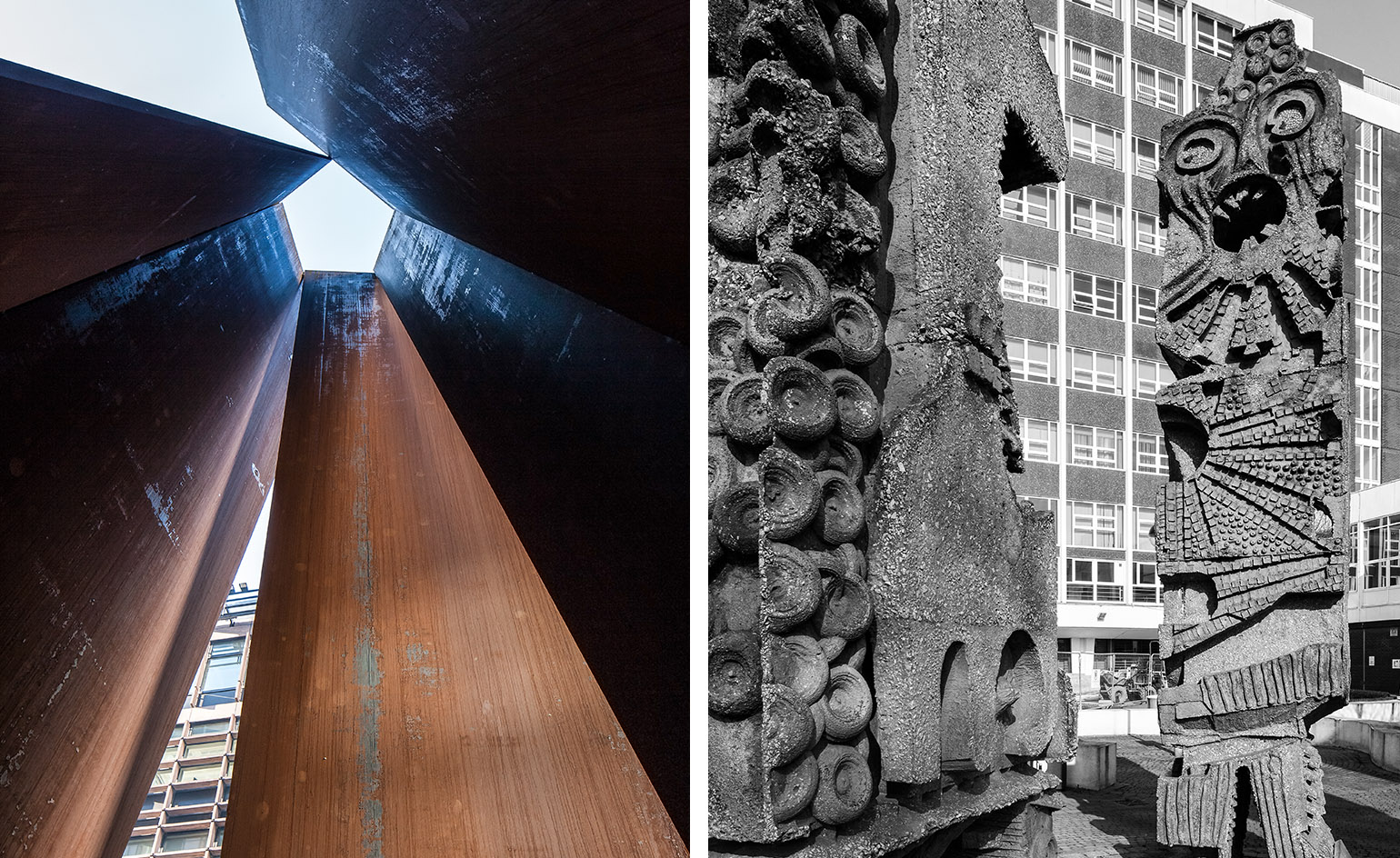
Left, Fulcrum, Broadgate, London, by Richard Serra. Right, Minutemen, Salford, by William Mitchell.
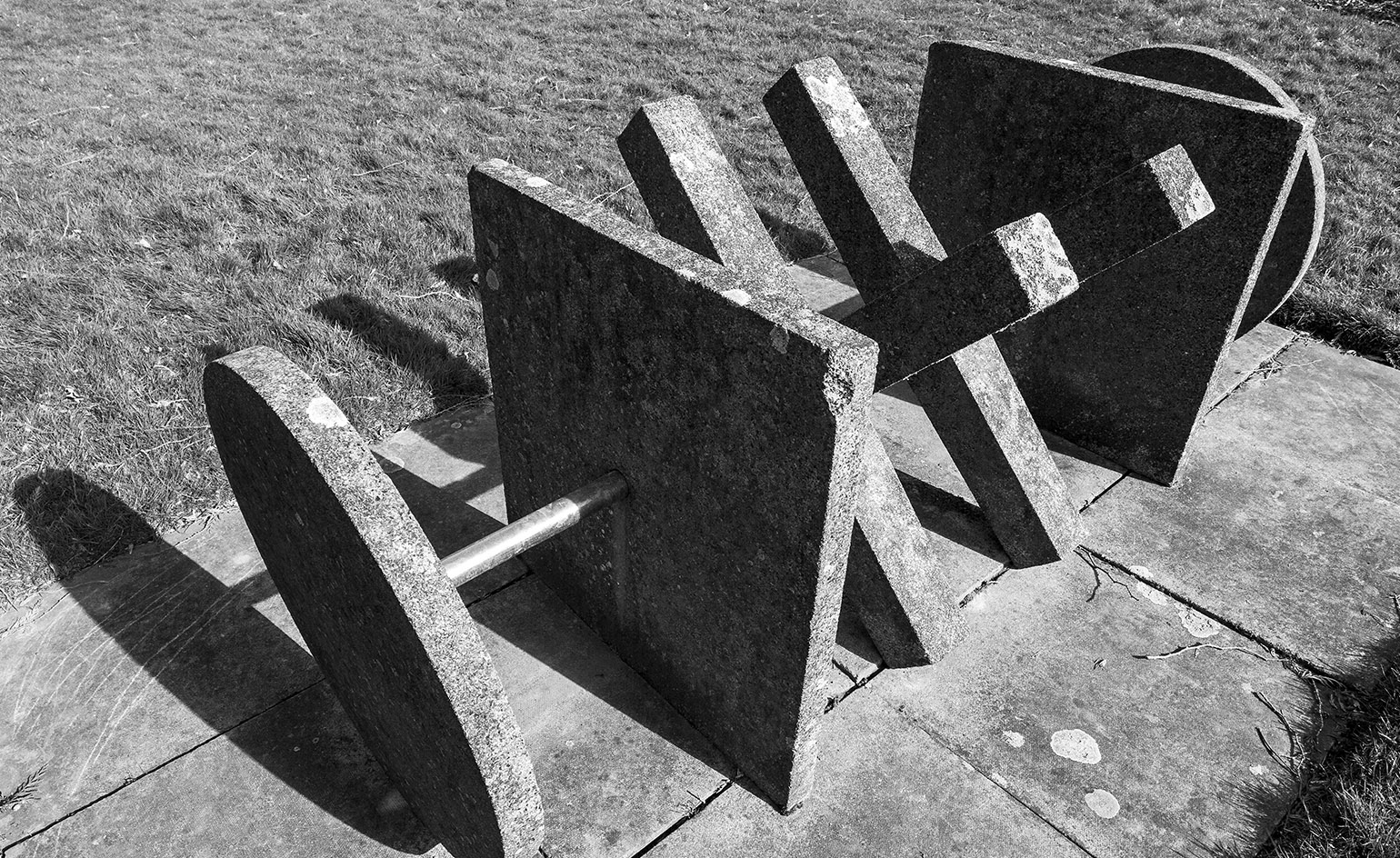
Declaration, Beaumanor Hall, Leicestershire, by Phillip King
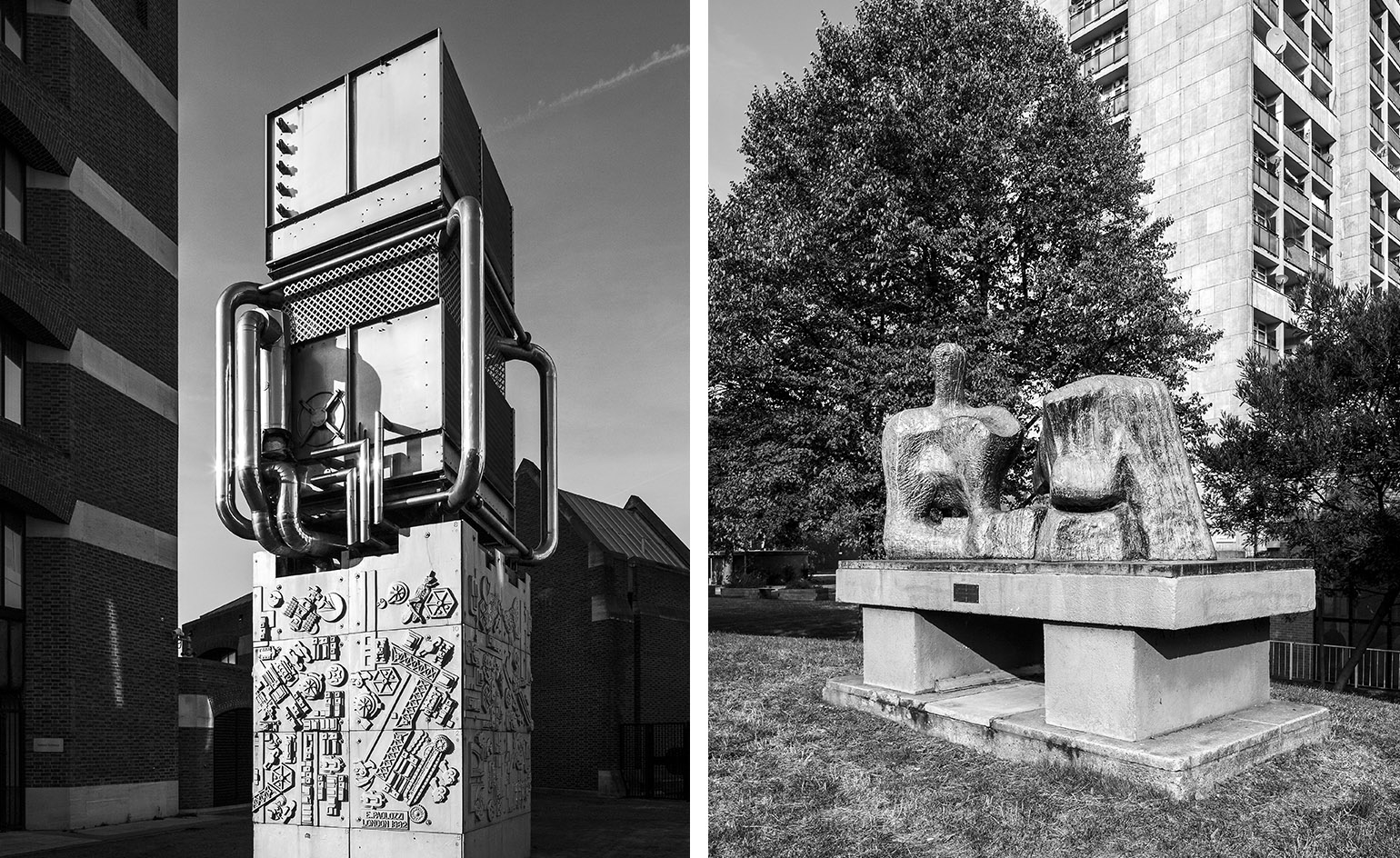
Left, Pimlico Cooling Tower, London, by Eduardo Paolozzi. Right, Two-Piece Reclining Figure No. 3, Brandon Estate, London, by Henry Moore.
INFORMATION
‘British Post-War Public Art’ is on view until 22 October. For more information, visit the Magaret Howell website
ADDRESS
34 Wigmore Street
London
WIU 2RS
Receive our daily digest of inspiration, escapism and design stories from around the world direct to your inbox.
-
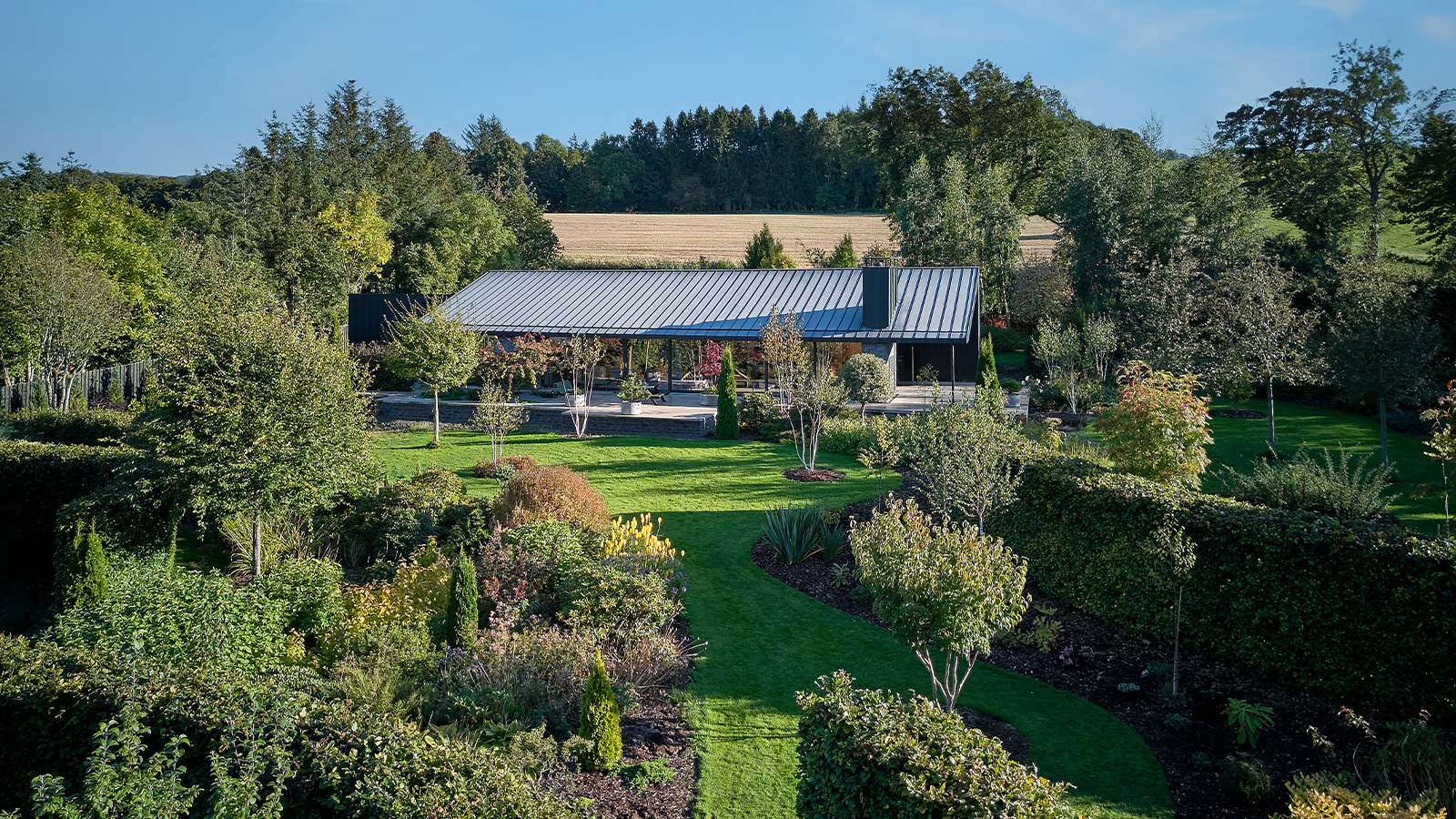 A compact Scottish home is a 'sunny place,' nestled into its thriving orchard setting
A compact Scottish home is a 'sunny place,' nestled into its thriving orchard settingGrianan (Gaelic for 'sunny place') is a single-storey Scottish home by Cameron Webster Architects set in rural Stirlingshire
-
 7 colours that will define 2026, from rich gold to glacier blue
7 colours that will define 2026, from rich gold to glacier blueThese moody hues, versatile neutrals and vivid shades will shape the new year, according to trend forecasters
-
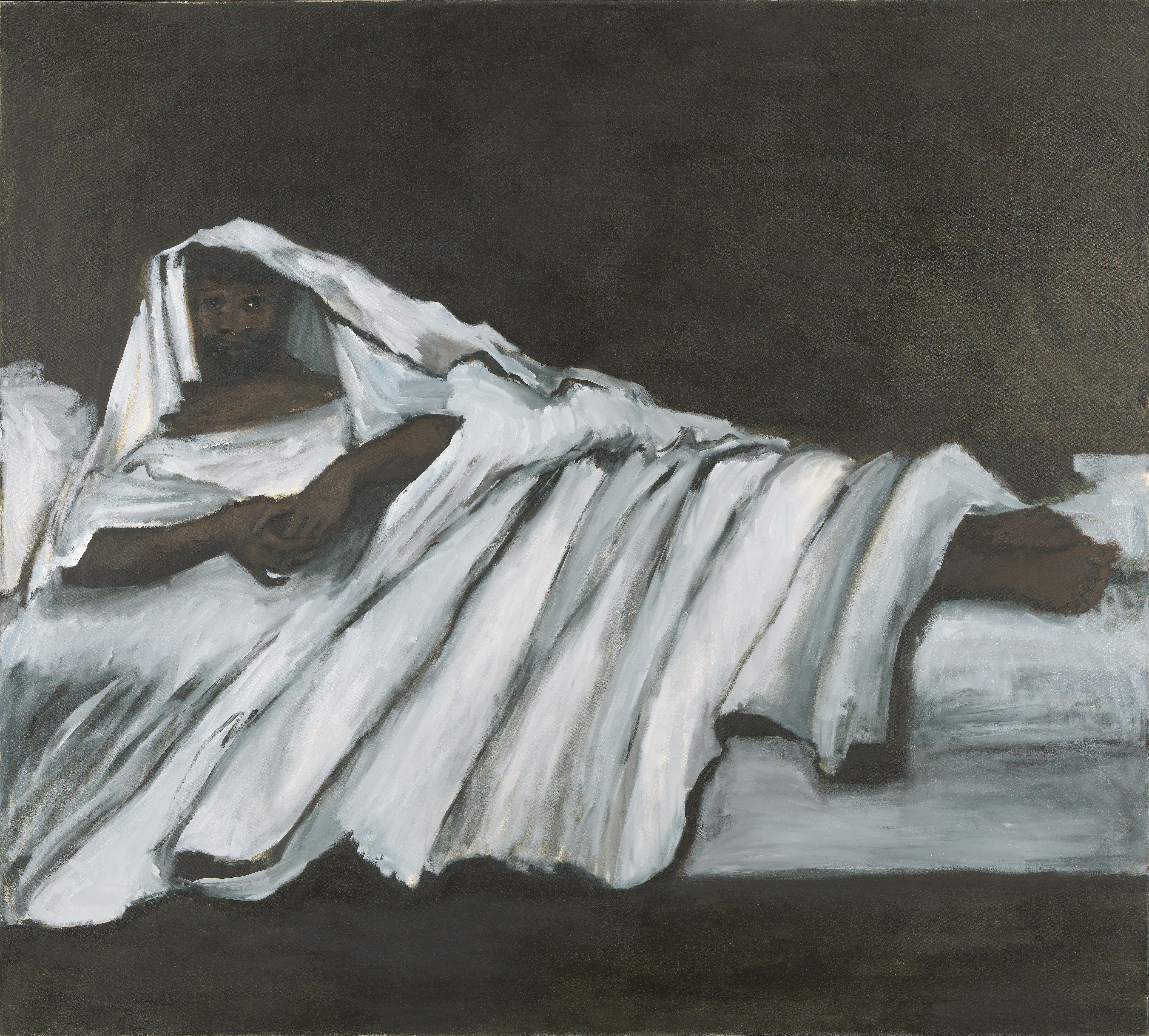 In Norway, discover 1000 years of Queer expression in Islamic Art
In Norway, discover 1000 years of Queer expression in Islamic Art'Deviant Ornaments' at the National Museum of Norway examines the far-reaching history of Queer art
-
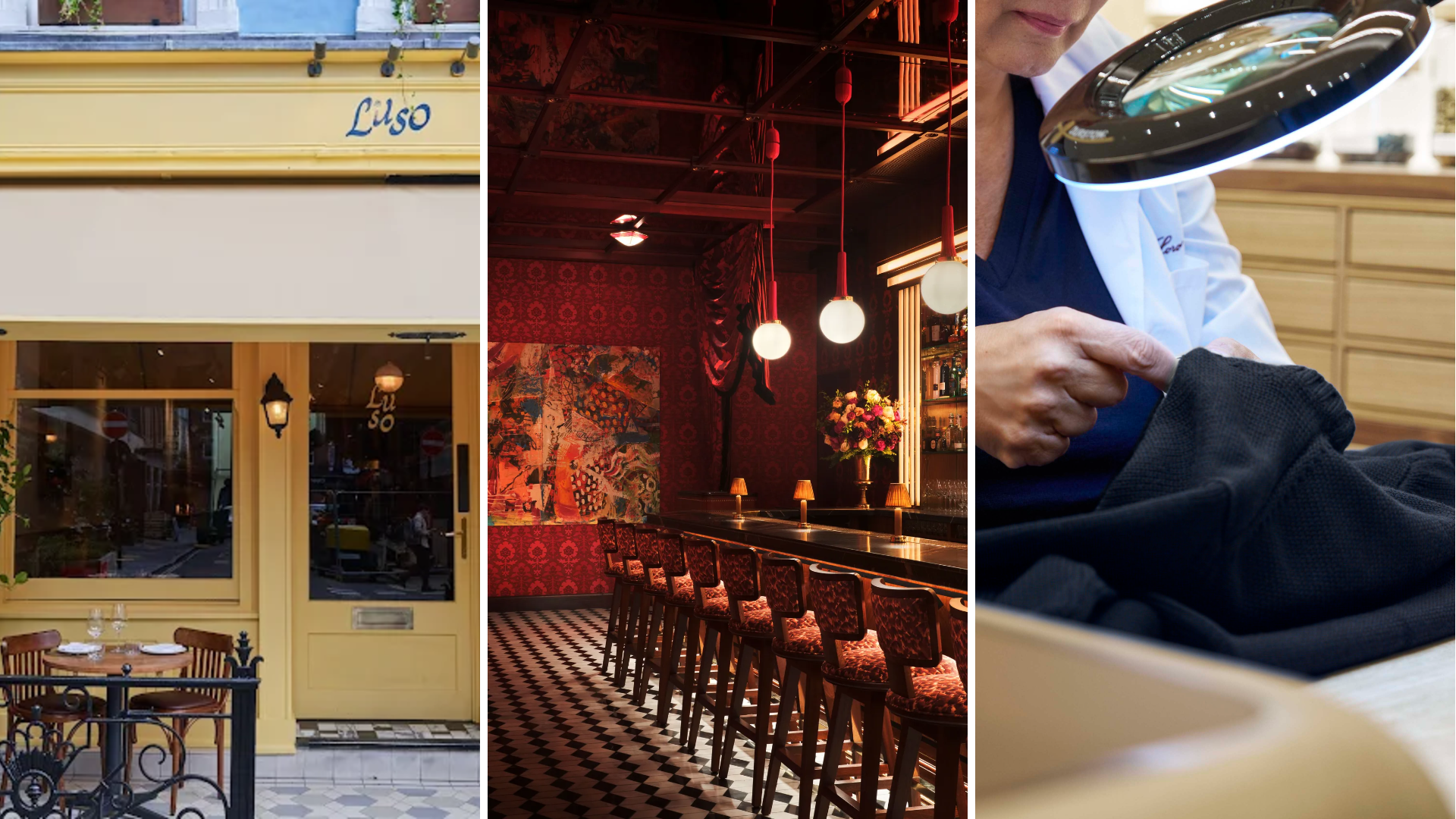 Out of office: The Wallpaper* editors’ picks of the week
Out of office: The Wallpaper* editors’ picks of the week'Tis the season for eating and drinking, and the Wallpaper* team embraced it wholeheartedly this week. Elsewhere: the best spot in Milan for clothing repairs and outdoor swimming in December
-
 Out of office: The Wallpaper* editors’ picks of the week
Out of office: The Wallpaper* editors’ picks of the weekFar from slowing down for the festive season, the Wallpaper* team is in full swing, hopping from events to openings this week. Sometimes work can feel like play – and we also had time for some festive cocktails and cinematic releases
-
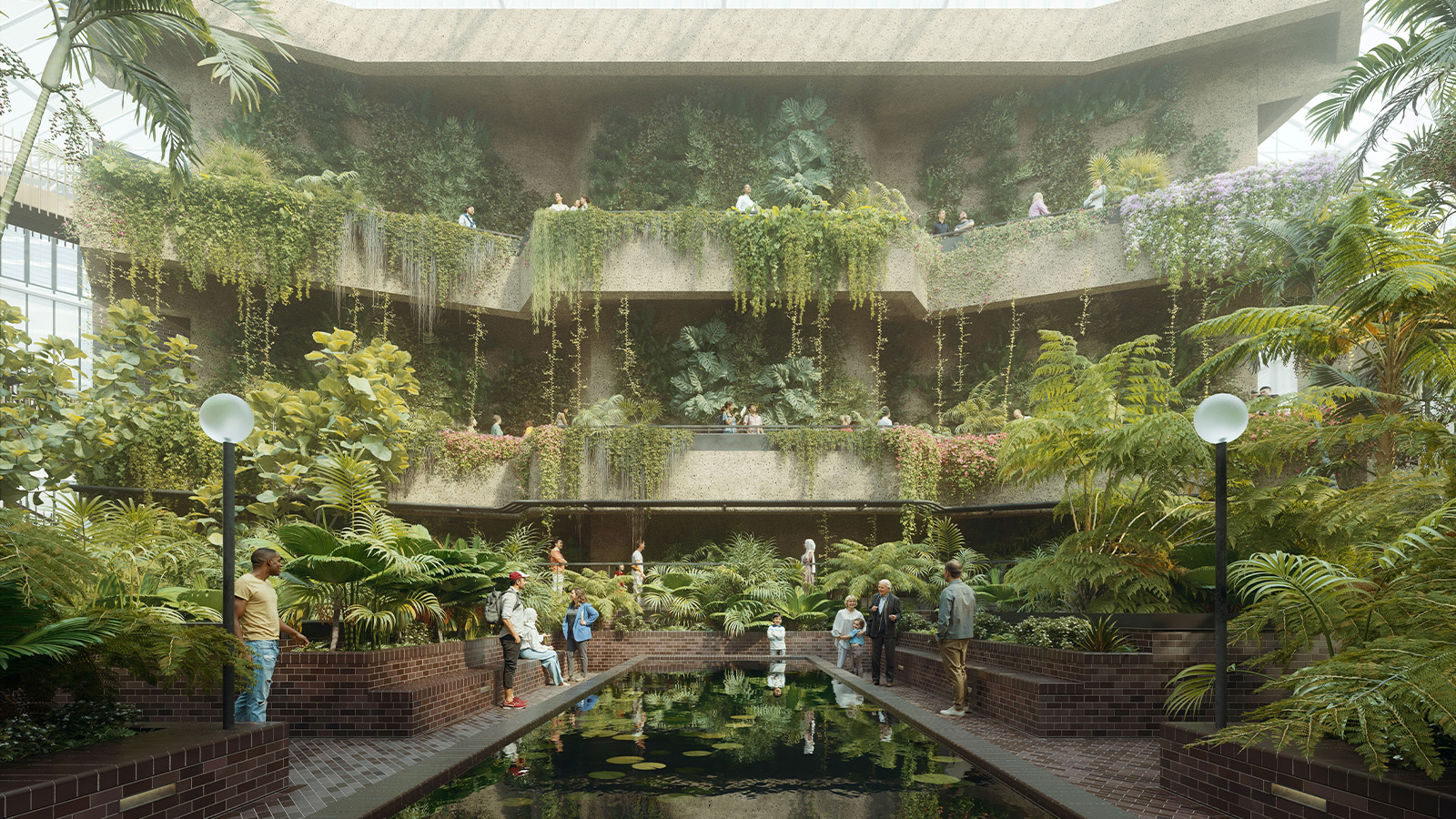 The Barbican is undergoing a huge revamp. Here’s what we know
The Barbican is undergoing a huge revamp. Here’s what we knowThe Barbican Centre is set to close in June 2028 for a year as part of a huge restoration plan to future-proof the brutalist Grade II-listed site
-
 Out of office: The Wallpaper* editors’ picks of the week
Out of office: The Wallpaper* editors’ picks of the weekIt’s wet, windy and wintry and, this week, the Wallpaper* team craved moments of escape. We found it in memories of the Mediterranean, flavours of Mexico, and immersions in the worlds of music and art
-
 Each mundane object tells a story at Pace’s tribute to the everyday
Each mundane object tells a story at Pace’s tribute to the everydayIn a group exhibition, ‘Monument to the Unimportant’, artists give the seemingly insignificant – from discarded clothes to weeds in cracks – a longer look
-
 Out of office: The Wallpaper* editors’ picks of the week
Out of office: The Wallpaper* editors’ picks of the weekThis week, the Wallpaper* team had its finger on the pulse of architecture, interiors and fashion – while also scooping the latest on the Radiohead reunion and London’s buzziest pizza
-
 Out of office: The Wallpaper* editors’ picks of the week
Out of office: The Wallpaper* editors’ picks of the weekIt’s been a week of escapism: daydreams of Ghana sparked by lively local projects, glimpses of Tokyo on nostalgic film rolls, and a charming foray into the heart of Christmas as the festive season kicks off in earnest
-
 Wes Anderson at the Design Museum celebrates an obsessive attention to detail
Wes Anderson at the Design Museum celebrates an obsessive attention to detail‘Wes Anderson: The Archives’ pays tribute to the American film director’s career – expect props and puppets aplenty in this comprehensive London retrospective